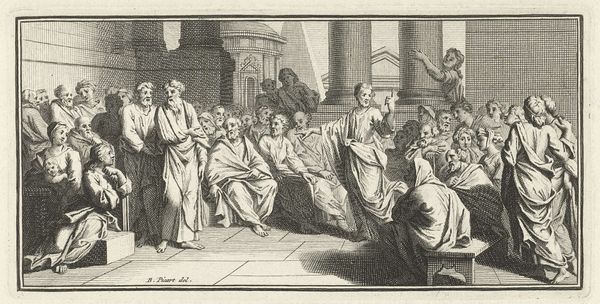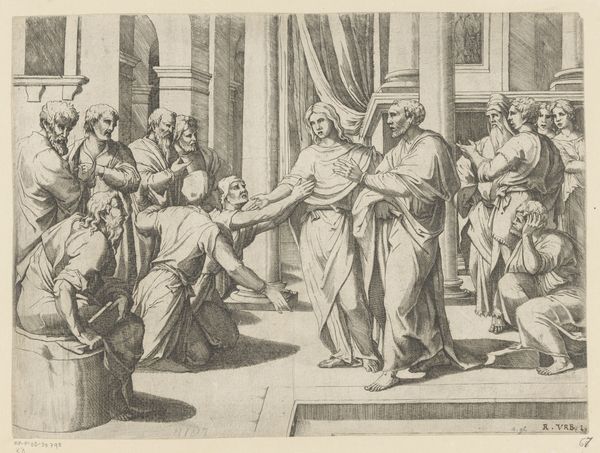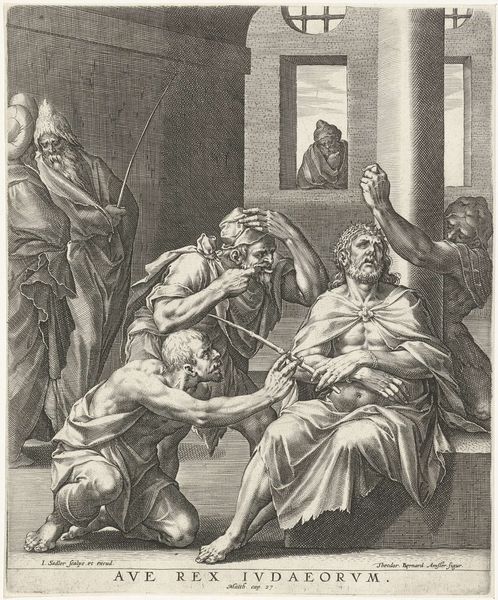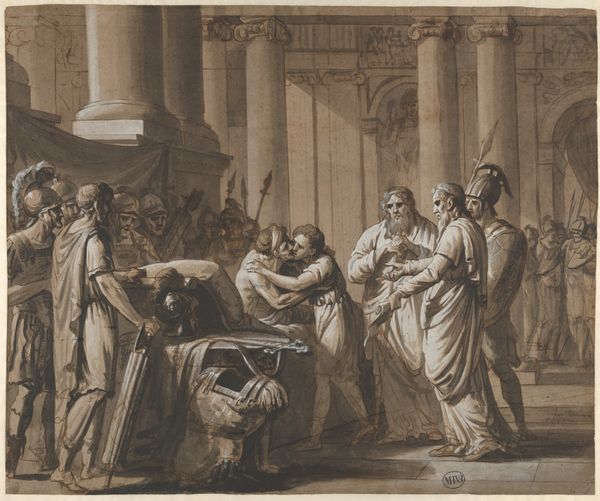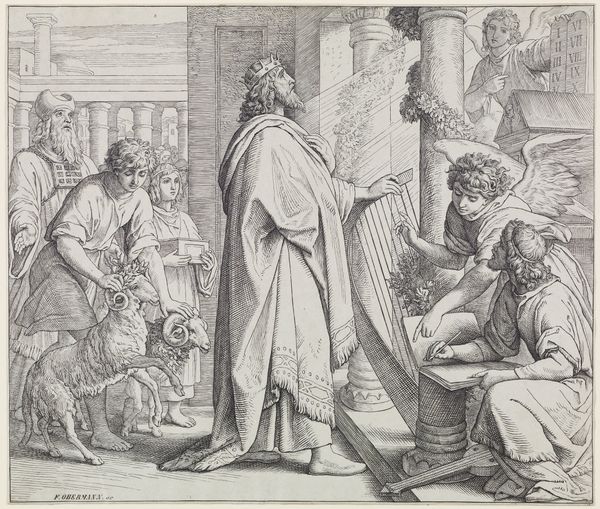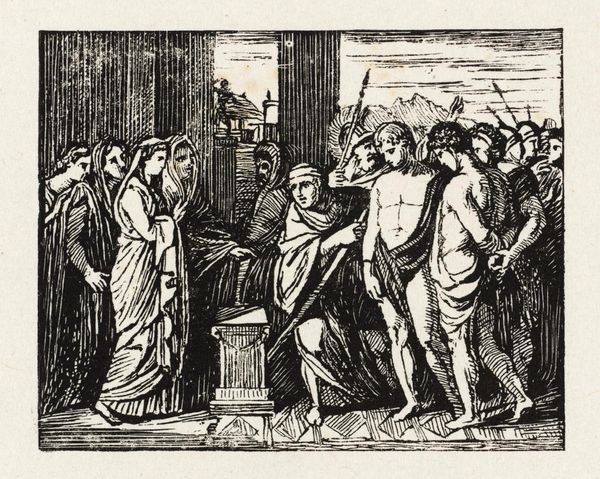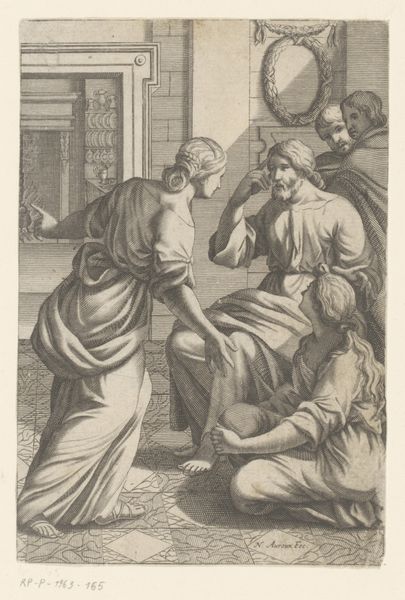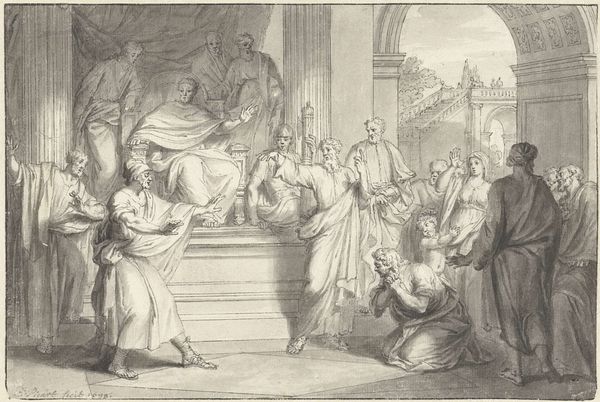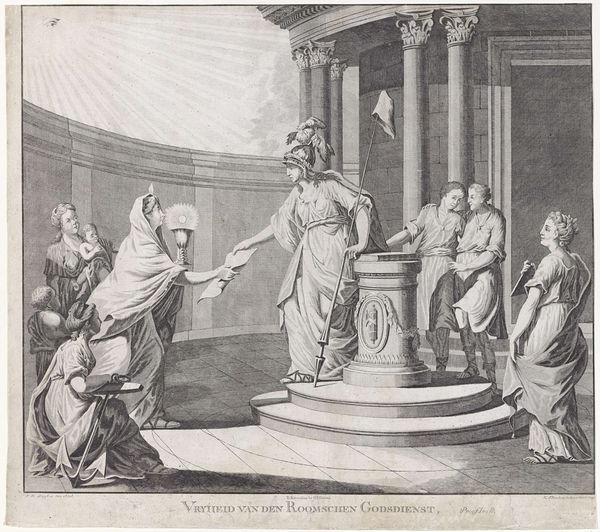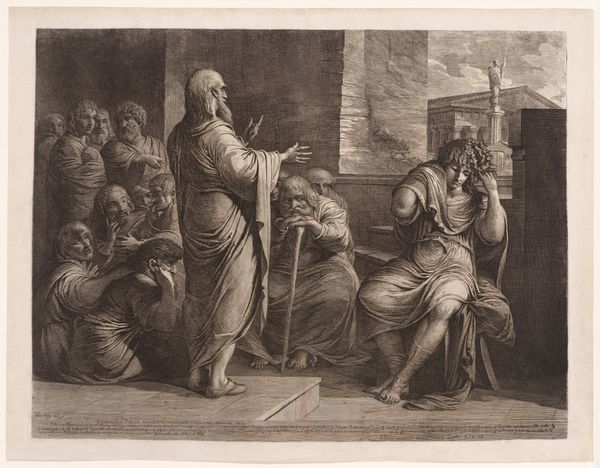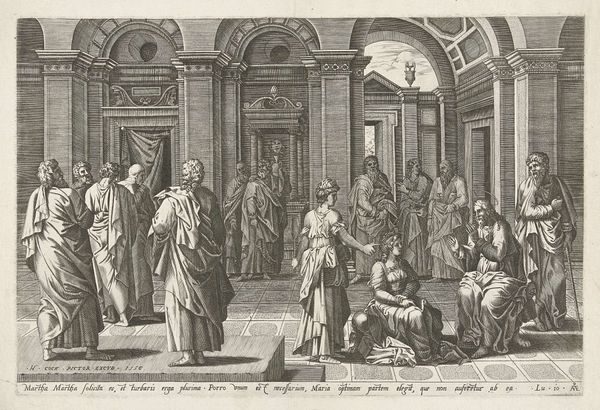
drawing, ink, pen
#
drawing
#
narrative-art
#
baroque
#
classical-realism
#
figuration
#
ink
#
pen-ink sketch
#
pen
#
history-painting
Dimensions: height 87 mm, width 165 mm
Copyright: Rijks Museum: Open Domain
Curator: Bernard Picart created this pen and ink drawing, "Paulus predikt te Athene," in 1709. It depicts Paul preaching in Athens, a key moment in the spread of Christianity. Editor: The immediacy of this piece strikes me; there's an almost reportage feel. The strong linearity emphasizes contours—capturing gesture and the dynamic reactions across the gathering. Curator: Picart was a master of engraving, and his skills clearly translated into his drawings. Consider the Enlightenment context. This drawing exemplifies a growing interest in using images to disseminate knowledge and ideas about historical events, particularly those from classical or religious antiquity. Editor: The architecture, rendered in receding planes, definitely anchors the scene in classical antiquity. But it’s the composition, especially how Picart employs diagonals to lead the eye, that makes it so compelling. See how those lines converge on Paul? He commands the pictorial space and, ostensibly, the theological one as well. Curator: Indeed. His expressive gestures mirror a fervent appeal, and it shows the baroque’s flair for drama within an apparently objective historical rendering. This wasn’t merely illustration. Picart also sought to actively shape understanding. The very choice of depicting Paul preaching at the Areopagus reflects the 18th century's own emphasis on reasoned argument and public discourse in shaping belief. Editor: And the subtle tonal gradations, achieved solely through line work, build a convincing illusion of depth. The details invite repeated viewing—see how light falls and emphasizes key figures such as the women in attendance? There is a clear semiotic system that privileges Paul through placement and expression. Curator: The artwork's location in the Rijksmuseum suggests how it fits within broader Dutch and European cultural narratives. This drawing isn’t just an artwork, but also an important artifact within debates about faith, reason, and the role of visual representation in society. Editor: Examining it now, it's striking to consider how something made of mere ink and paper can capture the weight of history and the potential for social change. Curator: A pertinent observation about the piece, and Picart’s role in visual and cultural dialogue during a period of seismic social change. Editor: I completely agree. It has indeed been insightful exploring Picart’s drawing through our perspectives.
Comments
No comments
Be the first to comment and join the conversation on the ultimate creative platform.
